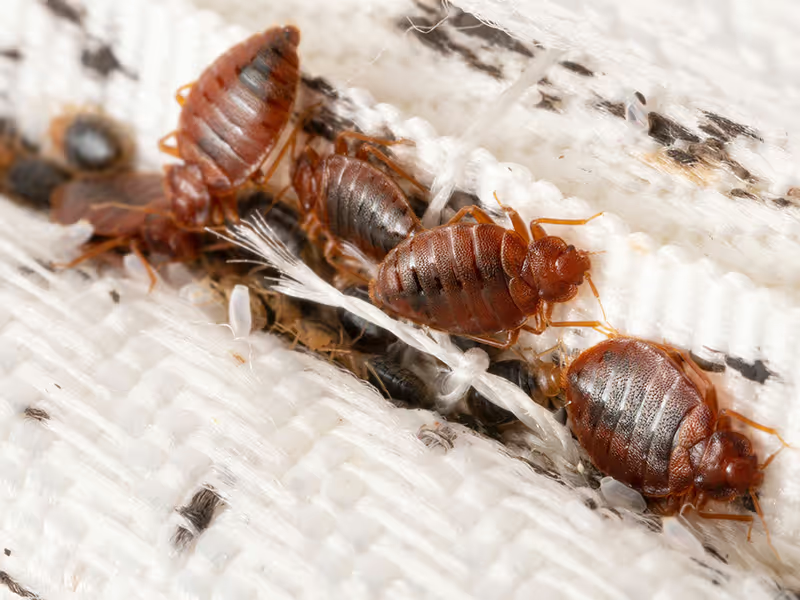Bed bugs begin life inside tiny, pale-colored eggs, each about 1 millimeter long. These eggs may appear individually or in clusters. When they hatch, the young insects emerge as nymphs, not larvae—unlike many other insects. So, if bed bugs have hatched in your home, you won’t find caterpillars, worms, maggots, or other larval forms.
Nymphs: Baby bed bugs look like smaller versions of adults. They are oval-shaped, with six legs and two antennae. Nymphs are more transparent and paler in color than adults. As they grow, they darken in color, becoming tan, and may show black or red inside their bodies—evidence of excrement or recently ingested blood.
Females: Female bed bugs are teardrop-shaped, with reddish-brown, slightly translucent skin marked by horizontal grooves on their abdomens. You may see black or red inside their bodies; red indicates a recent blood meal, which causes the abdomen to appear bloated. Females typically measure up to 5 millimeters in length unless engorged from feeding.
Males: Male bed bugs resemble apple seeds in shape but have a more pointed abdomen than females. Otherwise, they share the same reddish-brown color and horizontal abdominal grooves. Like females, they are usually no longer than 5 millimeters unless recently fed.
While bed bugs are visible to the naked eye, they tend to hide well, making them difficult to detect.

There is no conclusive evidence that bed bugs transmit diseases to humans in real-world settings. However, their presence can still cause significant discomfort and emotional distress. Common problems associated with infestations include:
If you suspect a bed bug problem, contact a licensed pest control professional immediately. Though not dangerous in the traditional sense, the issues caused by bed bugs tend to escalate as infestations grow.
Bed bugs spread through passive dispersal, hitching rides on or inside personal belongings. They don't deliberately seek out homes but are accidentally brought in from other infested locations. Common ways bed bugs are introduced into homes include:
These are just a few of the many ways bed bugs can enter your home.
No. Although bed bugs prefer beds due to easy access to sleeping hosts, they are not limited to them. You might find bed bugs in:
Look for them in tight, dark spaces close to human activity.
Several signs may indicate a bed bug infestation:
If you notice any of these signs, contact Harbor Pest Control for immediate assistance.
Bed bugs multiply rapidly. A female can lay between 1 and 12 eggs per day. Under ideal conditions, a small infestation can grow into thousands of bugs within a few months. Bed bugs can travel between rooms in minutes, and populations can double in as little as 16 days.
While it’s difficult to completely prevent bed bugs, you can reduce your risk with proactive measures, such as:
The most effective strategy is early detection. Catching an infestation early can prevent it from becoming a major problem.





Helpful Tips & Info